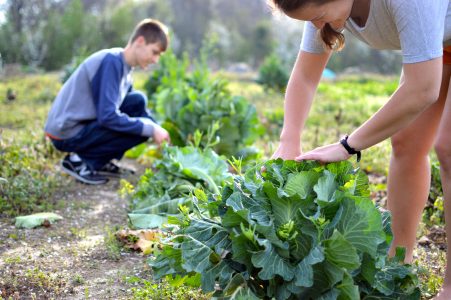Post contributed by Dr. Amy N. Wright, Interim Associate Dean for Instruction, College of Agriculture & Harry G. Ponder Professor, Department of Horticulture
We hear the phrase “sustainable landscape” used frequently but not often accompanied by a description of what makes a landscape in fact sustainable. So, what is a sustainable landscape? Or for that matter, what is a landscape? Is it our yard? Or the greenspaces we walk through on campus? What is the difference between landscape horticulture and landscape architecture? What is horticulture even?

Landscapes of all types have the ability to nourish us.
Horticulture is the cultivation of garden plants. Garden plants are those we plant in our garden or yard – fruits, vegetables, herbs, flowers, trees, and shrubs. Generally, landscape horticulture applies to the plants and planting design used for residential yards, individual businesses, and the gardens we visit. Landscape architecture includes those gardens but connects them together and links them to the other parts of the built landscape including the buildings and the roads. Therefore, the definition of a landscape depends on perspective. The landscape we are working on could be an entire city’s park system or it could be the small yard behind a townhouse.
Landscapes are complex and dynamic systems. Perhaps at the most basic level, a sustainable landscape is one that conserves our natural resources, supports wildlife biodiversity, and does not generate pollution. Usually, when we talk about a landscape, we are referring to our “green” environments, the living portion made up of our plants, or our “blue” environments – our waterways. But what about the other landscapes we encounter? The social, political, and economic landscapes. Are those landscapes sustainable? Do they improve our quality of life the same way mature trees or a river can?
In almost any system, diversity is an asset. While a monoculture planting on the grounds of an art museum may contribute an artistic element in that single small instance, we would not typically enjoy a garden if all the plants in it were identical. Instead, we appreciate the diversity of plant material in a garden and the aesthetic value of movement and contrast. Similarly, green and blue landscapes are more resilient when they include a diversity of species, forms, habits, and seasonality. Perhaps the principles that ensure sustainability and resiliency in our green and blue landscapes can be instructive in our other landscapes to ensure they also are sustainable and improve our well-being and quality of life.




